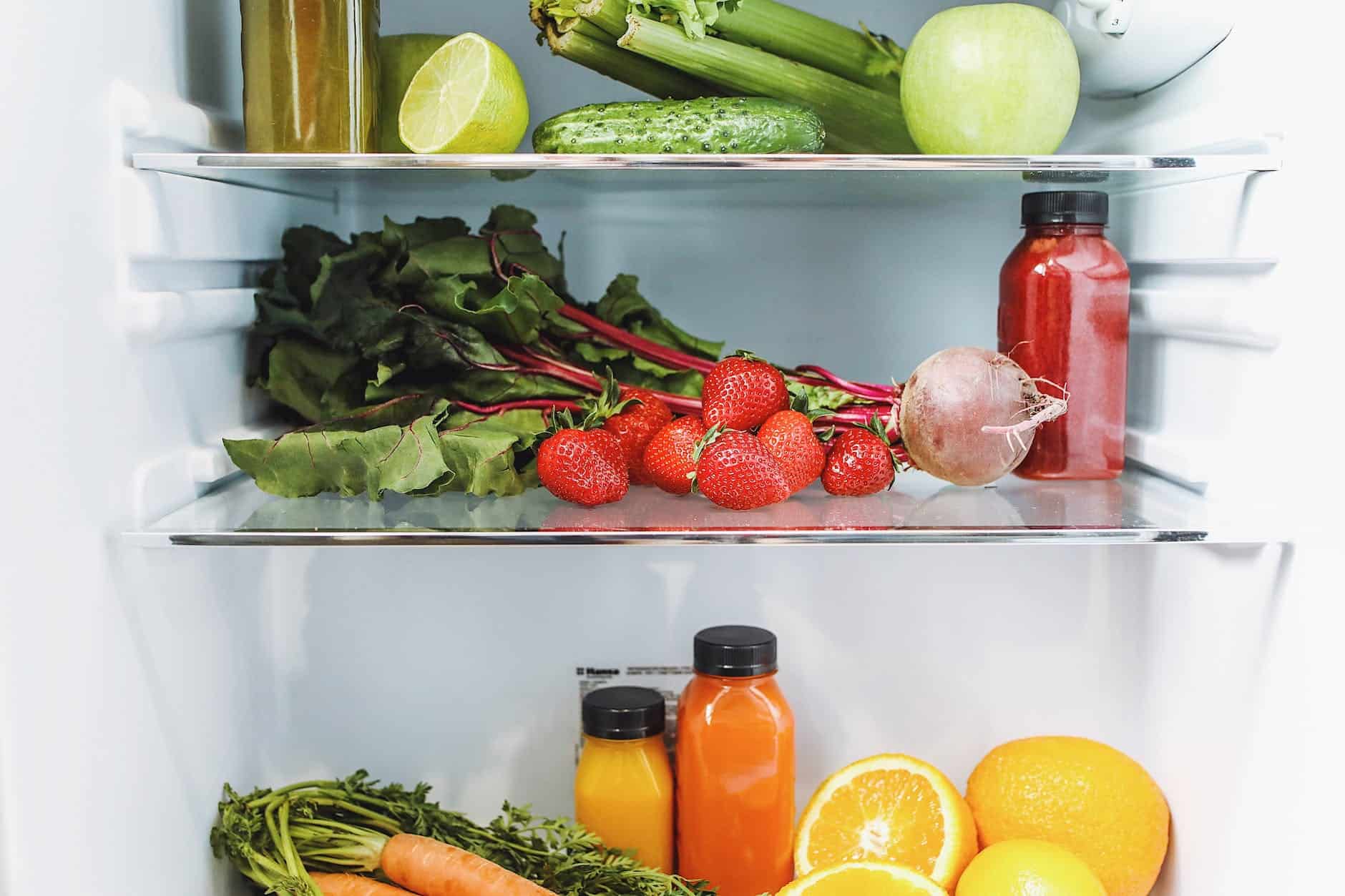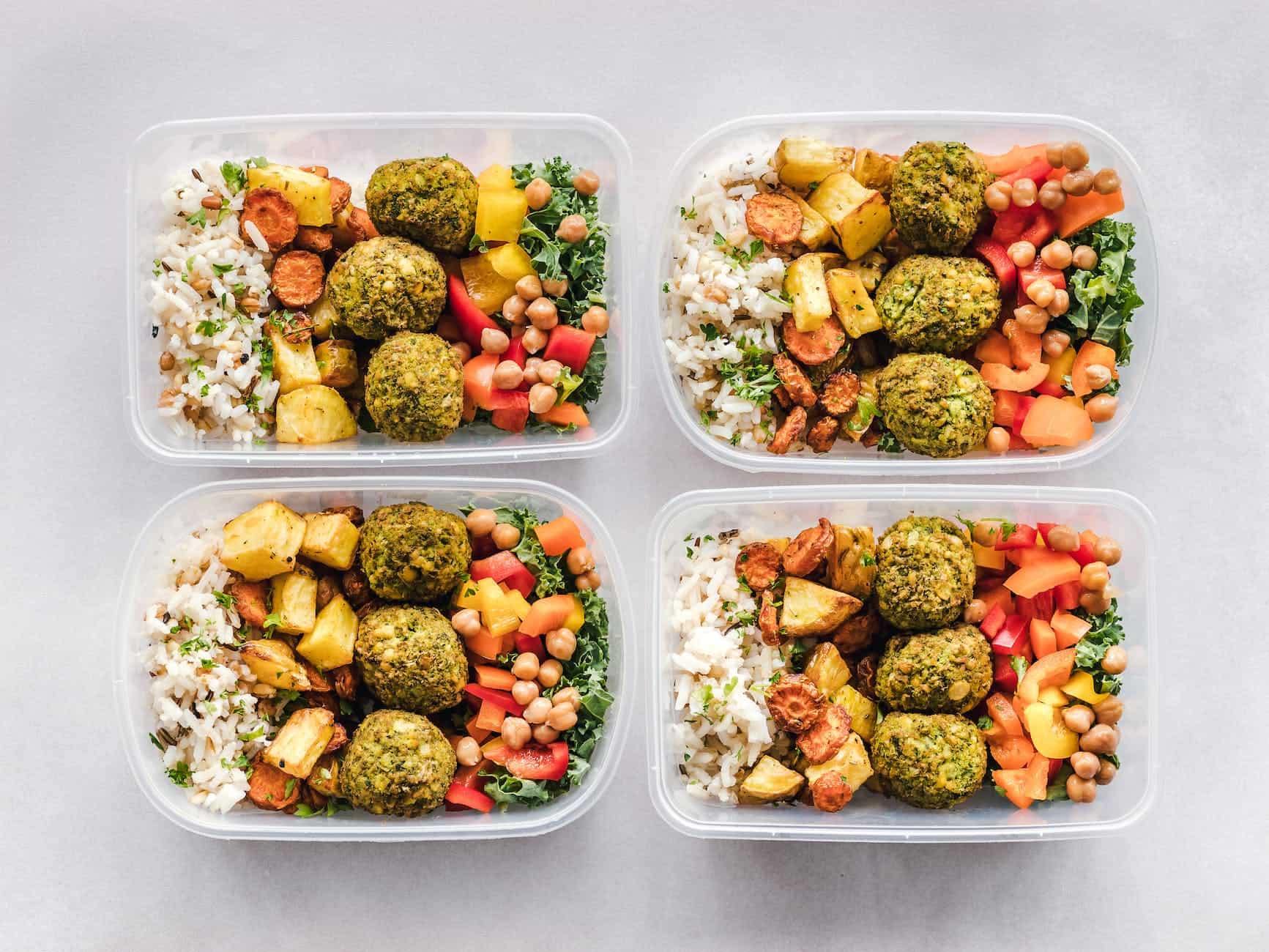4 Go-To Meal Planning Tips And Tricks
This post may contain affiliate links. As Amazon Associates and through other affiliate programs, we earn from qualifying purchases if you click on a link – at no extra cost to you. We only promote products we actually use and truly love!
New to meal planning? Check out these tips and tricks for getting started and creating personalized tools that fit your needs.
Meal planning can be hard. Especially if you’re trying to balance healthy eating with spending less on groceries, avoiding food waste, and finding time in your busy schedule to cook at home!
Over the years, we’ve developed some useful habits to simplify meal planning for ourselves. We’ve fine-tuned these habits into a few different tools that have been super handy, including a weekly meal planner and cheat sheets that help us figure out what to cook. While our method works great for us, it may not be perfect for everyone. Which is why we’re sharing our best meal planning tips and tricks with you this month, with a focus on how to create custom tools for you and your needs.

Meal Planning Tip #1: Use A Weekly Meal Planner
The number one thing you can do to make meal planning easier is this: get a meal planning sheet or pad, and use it religiously.
It might sound obvious, but it’s pretty hard to succeed at meal planning if you don’t write your plans down! We’re not talking about jotting some ideas down in your Notes app. We’re talking fully thought-out, specific meals for each day of the week you plan to cook, and scheduling it out so that you know exactly what you’re making when.
Knowing exactly what you plan to cook on each day of the week makes life so much easier. You can buy all your ingredients in one shopping trip at the beginning of the week, you won’t have to make day-of decisions about dinnertime, and you won’t forget what dish you were going to make with that ground beef you purchased. All in all, a well-designed meal planning pad can be a lifesaver when it comes to simplifying your routines.
While there are some digital meal planning tools out there, we recommend going with a hard copy, pen-and-paper strategy. Here’s why: when you physically write down your meals on a sheet of paper, it not only makes it easier to remember what you planned, but it can also be hung up on your fridge (or somewhere you’ll see it regularly). When your meal plan is literally staring you in the face every single day, it makes it that much easier to actually stick to it. Which is honestly one of the hardest things about meal planning!
Another great reason we love a physical meal planning sheet? We build our grocery lists on our phones, so we can have our meal plan right in front of us while we type out our shopping list. Not having to switch between apps or browser tabs takes some of the chaos out of our meal planning routine!
Our recommendation: We made a helpful digital meal planning kit that you can purchase on Etsy here. It’s almost identical to the meal planner we’ve been using for years – and it’s helped us stay so organized in the kitchen! We recommend printing out a copy to laminate and using a dry erase marker so you can reuse it week after week.
Alternative options: You can also buy meal planning pads with tear-off sheets like this one from Amazon (we used this one for years before creating our own, and it was a great starting point for us to get into meal planning). Pay attention to what you like and don’t like about it, and then you can even create your own personalized meal planning sheet with the help of online tools like Canva.

Meal Planning Tip #2: Take Inventory Of Your Pantry & Fridge
When you’re not sure what meals to plan, try shopping in your own kitchen! You can draw inspiration from ingredients you already have in the pantry, fridge, and freezer to determine what to make. We love this meal planning trick for 3 reasons:
- Planning meals around ingredients you already have saves you money at the grocery store
- Identifying what perishables need to be used up can help you cut down on food waste
- Regularly using items from your pantry helps keep things fresh as they need restocking
When it comes to perishables like fresh fruit, veggies, and dairy, it’s easy to end up with leftover ingredients at the end of the week. Maybe a recipe you made only called for half a bunch of cilantro. Or maybe you bought yogurt for a marinade and didn’t quite use it all, but don’t want to eat it for breakfast. Whatever the case, your leftover perishables should be the first ingredients to be incorporated into next week’s meal plan!
It’s also easy to fall into a habit of stocking up on pantry essentials like rice, pasta, beans, and broth when they’re on sale (especially if you like bulk shopping at Costco!), and then forget that you have them. While it’s always good to have your pantry stocked in case of an emergency, it’s also good practice to regularly refresh what’s in there so you’re not holding onto expired food.
The same thing goes for your freezer – it can be a black hole of half-eaten french fry bags, frostbitten ice cream tubs, and bags of frozen fruits and veggies. Take inventory every once in a while of the ingredients you might have tucked away in the very back, and try to use them before they’re totally forgotten about (and inevitably end up in the trash). You might be surprised at what you find hidden in there, and what meals your freezer stock might inspire.
Our recommendation: Whenever you’re stuck on what meals to plan, take a quick peek at your perishables first and ask yourself, can I use this by X date (when it will expire)? Now look at your pantry, and see if you can use anything there alongside your perishables to make a meal. For example, you might have a variety of leftover vegetables and some rice or noodles – plan a stir fry for early in the week to use the veggies up before they go bad!

Meal Planning Tip #3: Make A Meal Prep Cheat Sheet
This meal planning tip is a game-changer if you’re into meal prep! Here’s how it works:
- Write down a list of all your favorite big batch dishes, whether they’re slow cooker meals, casseroles, lasagnas, soups and chilis, or marinated meats.
- Now think about homemade ingredients you like to have on hand – things like pizza sauce, salad dressing, and prepared meats like our slow cooker pulled pork. Write those down, too!
- Next, if you have any go-to breakfasts or snacks that require a little prep work (like smoothie bowls, pesto, or homemade hummus), add those to the list.
Now you have a tidy list of your favorite foods that require prep work and can be made ahead in large batches. Finally, organize your list into 3 categories:
- Meals that you can make ahead of time and freeze in individual portions
- Ingredients you can prep in large batches and freeze in suitable portions for use in recipes
- Snacks and other ingredients (like salad dressing) that you can prepare in bulk on Sundays, and use throughout the week
And BAM – you’ve created your very own meal prep cheat sheet! Here’s why this is a helpful meal planning trick: it’s a quick reference to spark ideas when you’re not sure what to pencil into your meal planner. Much like shopping your own kitchen (Meal Planning Tip #2), this list can either remind you about those meatballs you prepped and shoved in the freezer 3 months ago, or inspire an idea for dinner when you also want leftovers for lunch the next day.
We also love that you can use this tool to plan out healthy alternatives to store-bought snacks. You might not think snacks need to be added to your meal plan, but we’ve found it helps us immensely when we’re trying to eat less junk food! Consciously building healthy snacks into your meal plan helps you actually buy the right foods at the grocery store, so that when you feel peckish there’s something fresh and nutritious readily available in your fridge.
Our recommendation: We encourage you to try and create your own meal prep cheat sheet based on recipes you know and love! If you need some inspiration, check out our collection of big batch meals here and slow cooker recipes here. If you’re new to meal prep and are struggling to come up with ideas, our digital meal planning kit (available on Etsy) comes with go-to recipe ideas and a few sample meal plans.

Meal Planning Tip #4: Keep A List Of Your Go-To Meals & Snacks
Our final meal planning tip is another kind of cheat sheet. This one is simply a list of your go-to meals for breakfast, lunch, and dinner, plus your favorite snacks! Simple enough to put together, right? Maybe.
Here’s why this meal planning trick might not be as easy as it seems: it may take you some time to build up a useful list and find what actually works for your schedule and dietary goals. While your favorite foods might be mac and cheese, pizza, and chocolate chip cookies, a list of only junk food doesn’t do you any good when you’re trying to eat more fruits and veggies.
So, here’s how we recommend approaching this list:
- Think about your personal wellness goals and make sure they’re reflected by the foods you choose for this list. Having a cheat sheet of go-to meals and snacks to refer to during meal planning will make it so much easier to actually reach those goals!
- You’ll want a balance of meals that are either light and healthy, heavier and more comforting, sweet, savory, or anything in between. Aim to include enough variety of flavors and cuisines on your list so that you can always find at least one meal to fit your mood.
- You’ll also want to balance dishes that are quick and easy with ones that might take more time and effort to cook. If you’re constantly turning to this list for meal planning inspiration, yet you never have the time to make any of the recipes on your list, then what good does it do you?
There are tons of ways you can choose to build and format this cheat sheet for yourself. Maybe it’s just handwritten on a sheet of paper that lives on your fridge. Or maybe it lives in your Notes app, so you can tweak and adjust it whenever you like. Whatever method you choose, know that this is a simple yet impactful tool you can easily create to help streamline your meal planning routine.
Our recommendation: Try building your go-to list over the course of a few weeks, then adjust it to fit your preferences. Do you often find that you want healthier, quicker meals on busy weekdays, but you enjoy spending more time cooking on the weekend? Try separating your list into weekday meal inspiration and weekend “treats” – a strategy that we like to use! Fill up the weekday list with easy, healthy dishes you know you’ll have the energy to cook. Everything else? Throw it on the weekend list. Then it’s no question when you’re meal planning what to slot in on a Wednesday versus a Saturday!
The Takeaway
There is no one-size-fits-all approach to meal planning. That’s why we’ve equipped you with our best tips and tricks for creating personalized tools that will help you develop a meal planning strategy that works for you! The beauty of custom tools like the ones we’ve created for ourselves is that they can – and should – change as your needs, preferences, and lifestyle change.
If there’s one takeaway here, it’s that you should never feel trapped by the idea of what “meal planning” should be. Try out different strategies until you find what works for you, and don’t be afraid to tweak things here and there to best suit your needs. And if you come up with a totally new strategy or tool that works for you, even better! Share your ideas in the comments below and maybe it’ll help someone else out, too 🙂
If you have any questions regarding the information presented in this post, please refer to our Nutrition Disclaimer here.
Looking for kitchen inspiration? Head over to our shop to see what we cook with every day, plus recommendations for foodie gifts and eco-friendly products.

